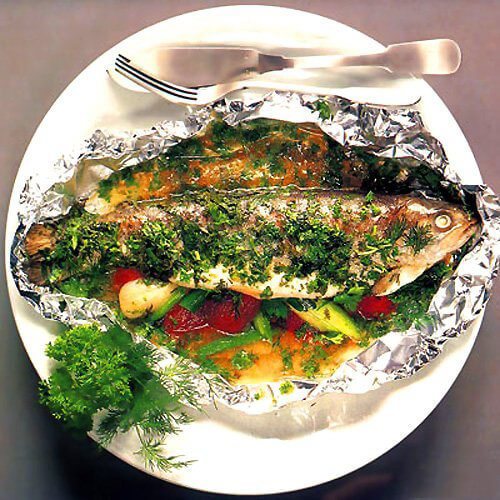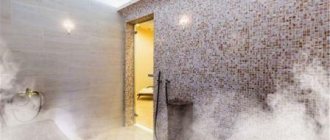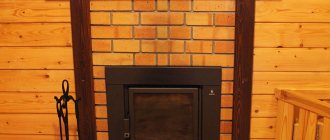Information on
aluminum mounting tape, self-adhesive “LAMS”
Extract from TU 2245-074-04696843-2001 with amendments. 15
Self-adhesive aluminum assembly tape (LAMS) is intended for gluing joints of thermal insulation boards made of foil-coated mineral wool, as well as for gluing foil-coated polyethylene foam to metal or plastic surfaces.
An example of a symbol for an aluminum mounting tape of the self-adhesive brand LAMS, 30 microns thick, 50 mm wide, 50 m long when ordering and in other documentation:
Self-adhesive aluminum mounting tape LAMS 30/50-50, TU 2245-074-04696843-2001.
TECHNICAL REQUIREMENTS
The range and physical and mechanical characteristics of aluminum mounting self-adhesive tape LAMS are presented in the table
| № p/p | The name of indicators | Values for brands: | ||||
Megaflex LLC is a rapidly growing company in the field of development of vapor barrier, waterproof and windproof films and membranes, as well as foiled polyethylene foam, foil for baths and foil tape.
First, you need to clearly define what you mean by a bathhouse. Unfortunately, already at this stage many make serious mistakes, confusing the bathhouse and the sauna. The difference is cardinal.
A bathhouse is always wet steam, a relatively low temperature (50-70 degrees) and excess pressure in the steam room due to the lack of ventilation.
Sauna - superheated dry steam and air pressure in the steam room equalized due to ventilation. In this case, the pressure in the sauna is usually equalized due to natural ventilation between the steam room and the relaxation room. To prevent the occurrence of through air currents, it is not recommended to make the sauna ceiling higher than two meters and be sure to make the dimensions of the steam room and relaxation room comparable. With the correct size of the ventilation hole between the steam room and the relaxation room, that same feeling of a sauna appears.
It’s completely different in the bathhouse. Here ventilation is not just unnecessary, it is harmful. The whole point of creating steam by “pushing” water onto the heater is lost if excess pressure is not created in the steam room. In this case, according to the laws of convection, the steam will rise upward and must be accelerated.
It makes no sense to do this in a sauna, so many people neglect the acceleration of steam and build steam rooms in Russian baths based on stereotypes caused by the design of the sauna. We are talking about the height of the ceiling. Usually it is made small, similar to a sauna. But in a good Russian bath, the ceilings should be relatively high! This contributes to better steam acceleration and, as a result, better sensations when using the broom. But without a broom, a bathhouse is not a bathhouse!
Knowing these simple nuances is almost half the battle! The other half is the construction itself. If you want to build a budget bathhouse or sauna, then the best option is a frame structure. Inexpensive and “angry”, unlike “classic” log houses.
Why? The answer is simple - a log house made from thick logs is not cheap, a log house made from thin logs does not provide sufficient thermal insulation, a log house made from coniferous wood does not create the necessary atmosphere in the bathhouse (resin and a specific smell are not pleasant to everyone), and a log house made from deciduous wood is very expensive .
The frame design allows you to “kill several birds with one stone” - it does not require a serious foundation, is relatively inexpensive, and allows you to achieve excellent thermal insulation. The main thing is to follow the technology.
The construction of a frame bath or sauna begins with calculation. Do not forget that the “pie” of steam and thermal insulation from the inside of the steam room, together with the air gap, can reach 15 centimeters, so set the dimensions with such a margin for each wall. In addition, fire barriers must be provided around the stove area. This also requires space.
After the plan for the future bathhouse or sauna is ready, construction begins. They start with the frame. Insulation is laid inside the frame (try not to compress it too much), on the outside the insulation is protected by a vapor-permeable membrane “Megaflex A2”, on top of which a sheathing is attached, onto which the outer skin is stuffed (the most budget option is lining or siding).
It is more difficult from the inside - it is strictly forbidden to install a hydro-vapor barrier in a steam room directly onto the frame using insulation! The fact is that the dew point (due to the difference in temperatures outside and in the steam room) is shifted almost to the level of the inner surface of the wall and if you do not provide for the possibility of ventilation of the insulation, then problems with its tearing off, rotting of the frame, fungus, etc. are inevitable.
Therefore, it is imperative to leave a gap of 4-5 cm between the insulation and hydro-steam insulation for natural ventilation. This is usually achieved by padding the vertical slats directly onto the frame. And already on them a hydro-vapor barrier “Megaflex” B or C is attached, and on top of it - reflective insulation (foil for baths “Megaflex” KF or M). The resulting “pie” is covered with hardwood paneling, which should not be treated with any wood impregnations.
If you are building a sauna, then do not forget about the ventilation shaft between the steam room and the relaxation room. It is highly desirable that the rest room is also well insulated. This will avoid excessive traction. There is little left to do - install the stove, hang the doors, install the floors and you can start steaming!
source: www.mega-flex.ru paintings: A. Gerasimov “Russian Bath”, A.A. Plastov “Spring. In the bath." 1954
If you use aluminum foil for cooking - READ THIS!
Aluminum foil is present in most homes. It is universal, easy to use, and also allows you to make the cleaning process as fast as possible. Foil can be used to cover a casserole or make the most perfect baked potato.
However, if you often cook with foil, you should definitely know the following facts. It's likely that you've never heard of this before! Simply put, it is dangerous to your health!
Bad effects on your brain
Aluminum is a heavy neurotoxic metal that has long been linked to the development of Alzheimer's disease. Exposure to this toxin can lead to decreased coordination, memory, and balance. Unfortunately, for many who suffer from Alzheimer's disease, permanent memory loss creates a huge metaphorical gap with loved ones that cannot be repaired. It's hard to maintain a bond with someone who doesn't even remember you.
Bad for your bones
This toxic metal tends to accumulate in the bones. It competes directly with calcium for space in your bones, and guess who wins this tug of war? While an aluminum skeletal frame may sound so appealing that every half-robot woman would love to have it, our bodies are not the stuff of science fiction. Our skeleton must be made of calcium so that our bones do not break from a simple fall.
Bad for your lungs
Inhaling aluminum can lead to breathing problems, including pulmonary fibrosis. If you frequently grill with aluminum foil, you may be left with a pair of bad lungs.

And how does this heavy metal get into your body? Sodas in aluminum cans and deodorants containing aluminum have long been considered the main sources of aluminum. Somehow aluminum foil didn't make it onto this list.
Are you eating aluminum shavings?
Nobody actually breaks off a piece of foil and chews it recklessly, unless you have a strange illness or are a cat playing with a ball of foil.
However, this is exactly what you do when you cook with foil at high temperatures. Whether baking or grilling, high heat creates tiny cracks in the metal that can break off and get into your food. These pieces are so small that you will not be able to tell that they are hidden in the food.
Chemical leaching
Even if small pieces of metal don't break off from the foil, you can still accidentally cause aluminum chemical leaching when you cook with certain spices or acidic foods such as lemon.
Dr. Essam Zubaidi, a chemical engineering researcher at the American University of Sharjah, found that just one meal cooked with foil could leach 400 mg of aluminum.
“The higher the temperature, the more leaching. Foil is not suitable for cooking and is not suitable for use with vegetables such as tomatoes, citrus fruits or spices.”
According to the World Health Organization, the daily maximum safe intake level should be no more than 60 mg.
Metal inhalation
You don't even need to eat this metal to get enough of its toxins. You risk inhaling small pieces of aluminum if you do not cover your nose and mouth when standing near a stove or grill.
The foil in which you wrap food and grill it releases aluminum flakes into the air at high temperatures, which fly away along with the smoke, and you inhale it all. Ugh!

It is clear that this heavy metal is dangerous to your health. With this in mind, there are several precautions you should take to protect yourself.
Do not cook food with aluminum foil. Temporarily! Use it only for storing cold foods in the refrigerator. A better alternative would be to use glassware and avoid foil entirely. Do not store spices, tomatoes or citrus fruits in foil. Never! Along with the acid, aluminum will also get into the food.
Get rid of aluminum cookware. Pots and pans need to go away! As soon as you can purchase stainless steel cookware, pots and pans. You can probably find these utensils at your local hardware store.
Whenever possible, use wax paper instead of aluminum foil.

I had never suspected such dangers before. I'm going to reduce my use of aluminum foil immediately. What about you? published
This might interest you:
Psychosomatics of neck diseases: We “swallow” reality through the throat
Food TOXICITY: Foods that steal our energy
PS And remember, just by changing your consumption, we are changing the world together! © econet
Characteristics of insulation with foil
Let's consider the main advantages of insulation for a bath with foil:
- High resistance to temperature changes. This thermal insulator is often used for areas such as steam rooms, where the air temperature can rise to 150 degrees Celsius.
- Resistant to reflection and no water absorption. Foil insulation can be used to insulate any surface, even the floor.
- High performance in vapor barrier, waterproofing, thermal insulation. Due to its metallized coating, reflective thermal insulation is used for insulation of both residential and industrial buildings.
- Simple and easy installation. To install this type of material, you do not need to hire specialists or use special equipment. The installation process takes little time and effort.
Along with the advantages of foil insulation for a bath, there are also disadvantages, and the main one is due to the fact that the foil layer is susceptible to corrosion . But a heat insulator with a metallized layer does not have such a disadvantage, so it can be safely used in the construction of baths and saunas.
But when working with this insulation, you need to be careful and comply with all requirements, otherwise the result may disappoint you.
Aluminum can heat up and then transfer heat to its back surface, and then to the street. Therefore, in order for the insulation to perform its main function, it is necessary to ensure that the aluminum coating of the heat insulator does not overheat.
The way out of this situation would be to install an air gap on the inside of the room. The gap prevents the aluminum from overheating from direct heat transfer, and infrared rays will be reflected from the foil and back into the room.
Areas of use
Foil insulation has gained popularity in modern construction, and today it is often used to create effective vapor barrier and thermal insulation of baths and saunas, as well as to improve sound insulation performance for industrial premises.
It is especially often used for flooring, and has also proven itself to be excellent in the construction of multi-story buildings as an easy-to-use thermal insulation material.




